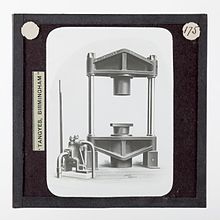Harvest

Photo @Suma
After harvesting cannabis, it is manicured, cured, dried, and stored. Fresh cannabis material typically contains 78-80% moisture [39] and drying is necessary for handling, storage, and avoiding degradation of major cannabinoids before chemical examination. The Office of Medicinal Cannabis of the Dutch Government specifies that the water content of cannabis must be between 5% - 10% directly after packing [57]. Drying crops directly on the ground or under direct sunshine must be avoided [21]. Plants dry within 24 hours to 15% ± 2% moisture when spread evenly to a depth of approximately 15 cm at 40˚C [35]. Moisture content can be checked by measuring weight loss after drying for 24 hours at 105˚C. If the plants are hung to dry, the mean times taken to achieve 15% moisture were 36, 18, and 11 hours at 30˚C, 40˚C, and 50˚C, respectively [35]. When stored in paper bags to dry at 21˚C and 40% RH, fresh floral material cut from stems reached 11% ± 1% moisture in 5 days [47]. The dried material was then cured at 18˚C and 60% RH for 14 days before determining the floral dry weight [47]. Drying at temperature higher than 37˚C for 24 hours may decarboxylate cannabinoid acids [58]. The effect of high drying temperatures on cannabinoids and terpenes requires further investigation. To minimize loss of volatile terpenes during heating, another method for cannabinoid and terpene preservation is freezing by sublimation, which takes 10 to 20 days.
As oxidation occurs with the presence of light, heat, and oxygen, degradation of major cannabinoids is minimized after drying by storage in cool and dark places. Fresh products must be stored between 1˚C and 5˚C and frozen products must be kept at −18˚C to −20˚C for long-term storage [21]. The content of THC stored at −18˚C, 4˚C, and 22˚C ± 1˚C decomposed at rates of 3.83%, 5.38%, and 6.92% per year, respectively [59]. Samples can be stored at −18˚C or 4˚C for about 30 weeks before concentrations of THCA and THC change, however, samples stored at 22˚C ± 1˚C showed some immediate decomposition. Dried samples stored at 50˚C for 24 hours showed slight decarboxylation while those stored at 100˚C and 150˚C showed significant decarboxylation of THCA and decomposition of THC within two hours [60]. The effect of freeze-drying on terpenes has not been well-studied, but reportedly fails to preserve the profile of the fresh plant by changing terpene concentrations [61].

Photo @Suma
After harvesting cannabis, it is manicured, cured, dried, and stored. Fresh cannabis material typically contains 78-80% moisture [39] and drying is necessary for handling, storage, and avoiding degradation of major cannabinoids before chemical examination. The Office of Medicinal Cannabis of the Dutch Government specifies that the water content of cannabis must be between 5% - 10% directly after packing [57]. Drying crops directly on the ground or under direct sunshine must be avoided [21]. Plants dry within 24 hours to 15% ± 2% moisture when spread evenly to a depth of approximately 15 cm at 40˚C [35]. Moisture content can be checked by measuring weight loss after drying for 24 hours at 105˚C. If the plants are hung to dry, the mean times taken to achieve 15% moisture were 36, 18, and 11 hours at 30˚C, 40˚C, and 50˚C, respectively [35]. When stored in paper bags to dry at 21˚C and 40% RH, fresh floral material cut from stems reached 11% ± 1% moisture in 5 days [47]. The dried material was then cured at 18˚C and 60% RH for 14 days before determining the floral dry weight [47]. Drying at temperature higher than 37˚C for 24 hours may decarboxylate cannabinoid acids [58]. The effect of high drying temperatures on cannabinoids and terpenes requires further investigation. To minimize loss of volatile terpenes during heating, another method for cannabinoid and terpene preservation is freezing by sublimation, which takes 10 to 20 days.
As oxidation occurs with the presence of light, heat, and oxygen, degradation of major cannabinoids is minimized after drying by storage in cool and dark places. Fresh products must be stored between 1˚C and 5˚C and frozen products must be kept at −18˚C to −20˚C for long-term storage [21]. The content of THC stored at −18˚C, 4˚C, and 22˚C ± 1˚C decomposed at rates of 3.83%, 5.38%, and 6.92% per year, respectively [59]. Samples can be stored at −18˚C or 4˚C for about 30 weeks before concentrations of THCA and THC change, however, samples stored at 22˚C ± 1˚C showed some immediate decomposition. Dried samples stored at 50˚C for 24 hours showed slight decarboxylation while those stored at 100˚C and 150˚C showed significant decarboxylation of THCA and decomposition of THC within two hours [60]. The effect of freeze-drying on terpenes has not been well-studied, but reportedly fails to preserve the profile of the fresh plant by changing terpene concentrations [61].

Last edited:






















